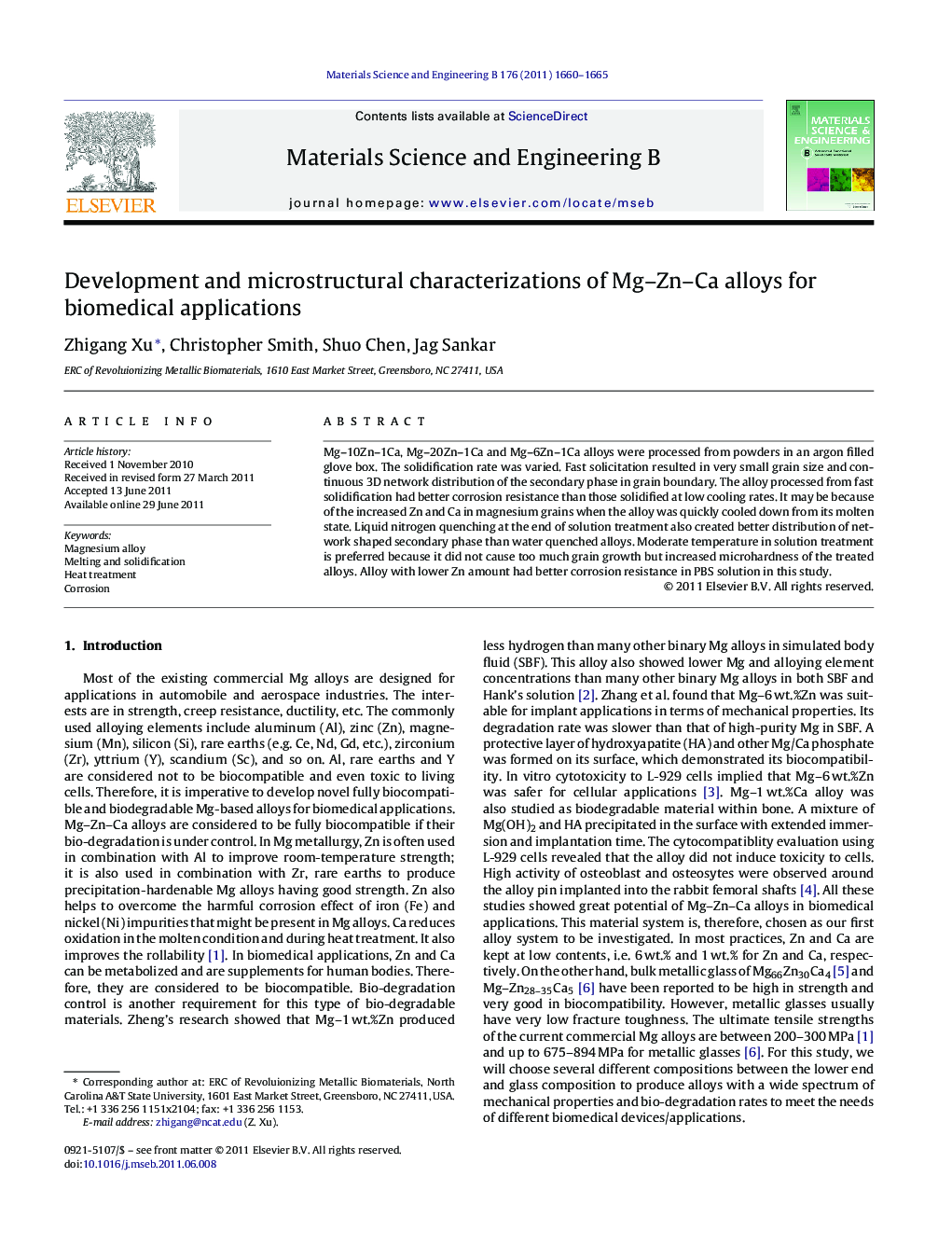| Article ID | Journal | Published Year | Pages | File Type |
|---|---|---|---|---|
| 1529532 | Materials Science and Engineering: B | 2011 | 6 Pages |
Mg–10Zn–1Ca, Mg–20Zn–1Ca and Mg–6Zn–1Ca alloys were processed from powders in an argon filled glove box. The solidification rate was varied. Fast solicitation resulted in very small grain size and continuous 3D network distribution of the secondary phase in grain boundary. The alloy processed from fast solidification had better corrosion resistance than those solidified at low cooling rates. It may be because of the increased Zn and Ca in magnesium grains when the alloy was quickly cooled down from its molten state. Liquid nitrogen quenching at the end of solution treatment also created better distribution of network shaped secondary phase than water quenched alloys. Moderate temperature in solution treatment is preferred because it did not cause too much grain growth but increased microhardness of the treated alloys. Alloy with lower Zn amount had better corrosion resistance in PBS solution in this study.
